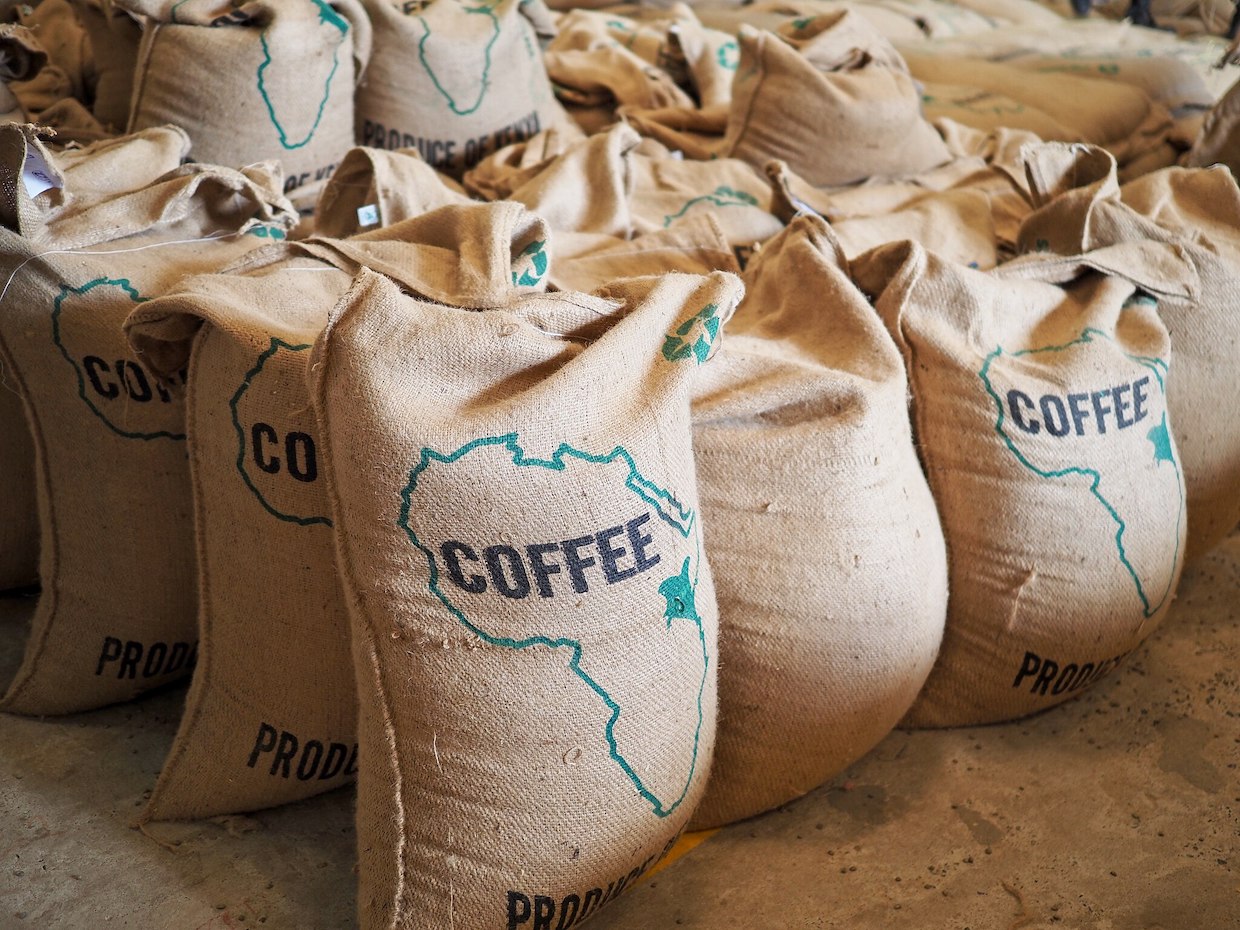
“Kenya coffee bags” by Bex Walton is licensed under CC BY 2.0.
Coffee production and exports from Kenya are expected to increase by about 6.7% and 5.5%, respectively, in market year 2023/24, due to improved rain conditions, government subsidies for fertilizers and relatively high prices.
At the same time, a lack of access to new planting materials and long-term price instability remain as threats to Kenya’s coffee sector, according to the most recent USDA Foreign Agriculture Service (FAS) report.
[Note: This is part of a series of DCN stories exploring the FAS coffee annual reports. The U.S. information agency is currently scheduled to deliver 16 annual country-level reports on the coffee sector. Each of those reports come from different authors and field offices.]
Kenya’s coffee sector remains well regarded for its production of high-quality arabica coffees. Yet the East African country’s trading structure remains unique, with more than 90 percent of coffee sales moving through the nearly 80-year-old Nairobi Coffee Exchange (NCE), a spot market and auction platform. The remaining 10 percent of Kenya’s export volume is traded directly through strict licensing protocols on an individual basis.
In January 2023, the government of Kenya extended a provision that placed the NCE under the country’s Capital Markets Authority (CMA). In doing so, roles previously assigned to private millers regarding coffee classifications and sales preparations have now been assigned to licensed brokers, according to the FAS report.
Kenya’s Parliament, meanwhile, is currently considering a coffee bill that would solidify the NCE’s place under the CMA, while also including a 1% levy on marketed coffee that would provide increased funding to Kenya’s Coffee Research Institute (CRI).
While the potential fallout from such regulatory changes remains unknown, the amount of harvested area for coffee production in Kenya is expected to remain relatively flat in 2023/24. According to the FAS report, the trend of converting coffee plantations for real estate uses in semi-rural areas has been slowing, while new planting has also been slowed by lack of producer access to new coffee seedlings, which are disseminated through CRI.
Overall production, meanwhile, is expected to be boosted by a recovery from the 2022/23 drought conditions, combined with increased use in fertilizer associated with a government-led subsidies program. The FAS report estimates that Kenya will produce approximately 800,000 60-kilo bags of green coffee, which represents less than 1% of global coffee production.
The United States remains the top export destination for Kenyan arabica, followed by Belgium, Germany and South Korea.
Does your coffee business have news to share? Let DCN’s editors know here.






Comment